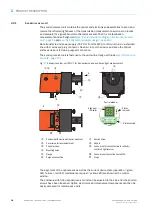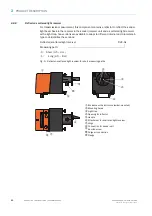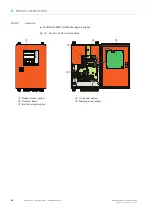
9
8011952/YWL2/3-0/2016-08| SICK
O P E R A T I N G I N S T R U C T I O N S | DUSTHUNTER C200
Subject to change without notice
IMPORTANT INFORMATION
1
1.4
Responsibility of user
1.4.1
General information
Designated users
The measuring system DUSTHUNTER C200 may only be installed and operated by skilled
technicians who, based on their technical training and knowledge as well as knowledge of
the relevant regulations, can assess the tasks given and recognize the hazards involved.
Special local conditions
▸
Observe the valid legal regulations as well as the technical rules deriving from implemen-
tation of these regulations applicable for the respective equipment during work prepa-
ration and performance.
▸
Carry out work according to the local conditions specific for the equipment as well as
operational hazards and regulations.
Retention of documents
Keep the Operating Instructions belonging to the measuring system as well as equipment
documentation onsite for reference at all times. Pass the respective documentation on to
any new owner of the measuring system.
1.4.2
Safety information and protective measures
Protection devices
Behavior during purge air failure
The purge air supply serves to protect optical subassemblies fitted on the duct against hot
or aggressive gases. Leave the supply switched on when the equipment is at a standstill.
Optical subassemblies can be severely damaged in a short time if the purge air supply fails.
Preventive measures for operating safety
NOTE:
Depending on the particular hazard potential, an adequate number of suitable
protection devices and personal safety equipment must be available and used
by the personnel.
NOTE:
When no fail-safe shutters are fitted:
The user must ensure that:
▸
The purge air supply runs reliably and continuously
▸
Failure of the purge air supply is immediately detected (e.g., by using
pressure monitors)
▸
Optical subassemblies are removed from the duct if the purge air supply
fails and the duct opening is closed off (e.g. with a flange cover).
NOTE:
The user must ensure that:
▸
Neither failures nor erroneous measurements can lead to operational states
that can cause damage or become dangerous
▸
The specified maintenance and inspection tasks are carried out regularly by
qualified, experienced personnel.










































